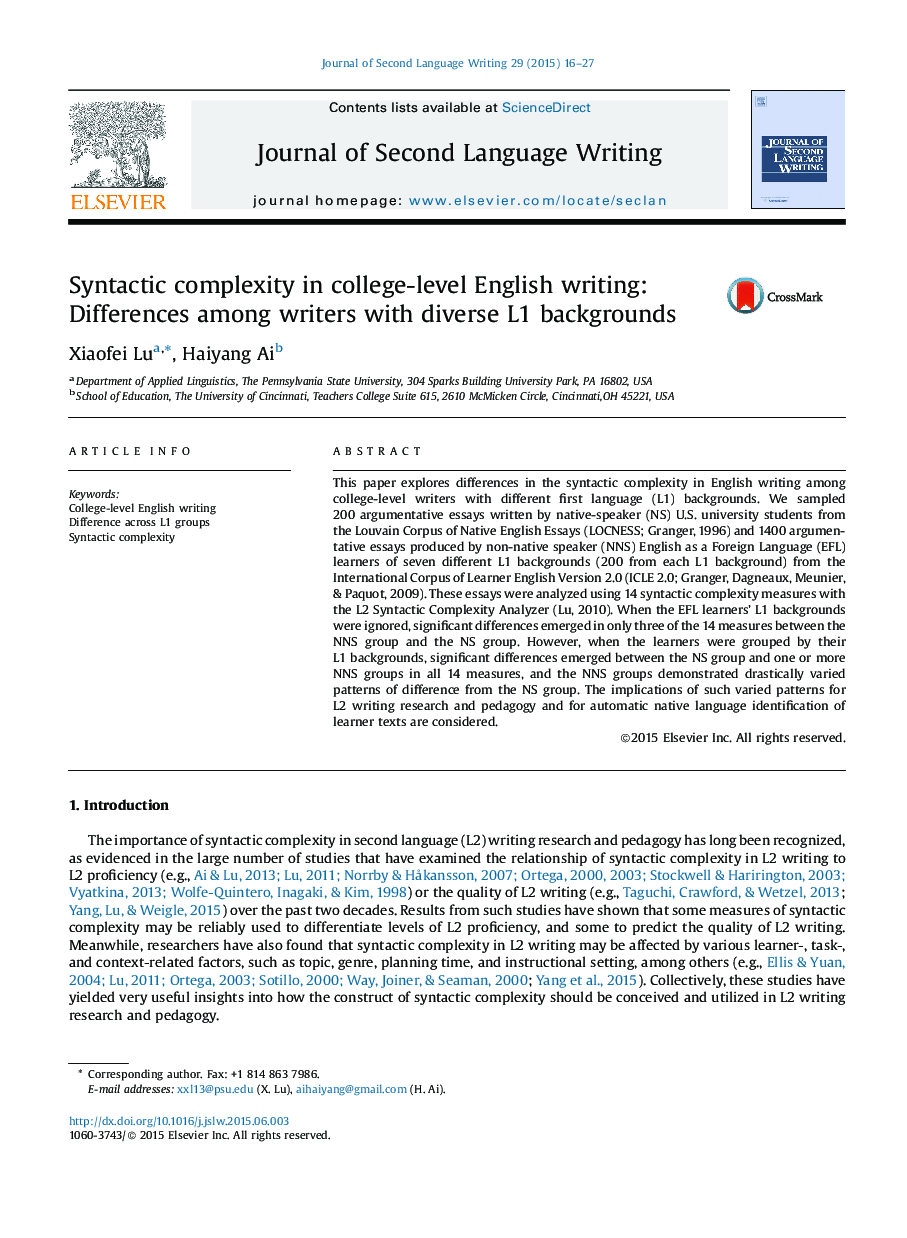| کد مقاله | کد نشریه | سال انتشار | مقاله انگلیسی | نسخه تمام متن |
|---|---|---|---|---|
| 363976 | 620942 | 2015 | 12 صفحه PDF | دانلود رایگان |
• We compare syntactic complexity in English writing by one NS and seven NNS groups.
• Treated as one group, NNS students differ from NS students in only a few measures.
• Treated separately, the seven NNS groups differ from the NS group in varied ways.
This paper explores differences in the syntactic complexity in English writing among college-level writers with different first language (L1) backgrounds. We sampled 200 argumentative essays written by native-speaker (NS) U.S. university students from the Louvain Corpus of Native English Essays (LOCNESS; Granger, 1996) and 1400 argumentative essays produced by non-native speaker (NNS) English as a Foreign Language (EFL) learners of seven different L1 backgrounds (200 from each L1 background) from the International Corpus of Learner English Version 2.0 (ICLE 2.0; Granger, Dagneaux, Meunier, & Paquot, 2009). These essays were analyzed using 14 syntactic complexity measures with the L2 Syntactic Complexity Analyzer (Lu, 2010). When the EFL learners’ L1 backgrounds were ignored, significant differences emerged in only three of the 14 measures between the NNS group and the NS group. However, when the learners were grouped by their L1 backgrounds, significant differences emerged between the NS group and one or more NNS groups in all 14 measures, and the NNS groups demonstrated drastically varied patterns of difference from the NS group. The implications of such varied patterns for L2 writing research and pedagogy and for automatic native language identification of learner texts are considered.
Journal: Journal of Second Language Writing - Volume 29, September 2015, Pages 16–27
